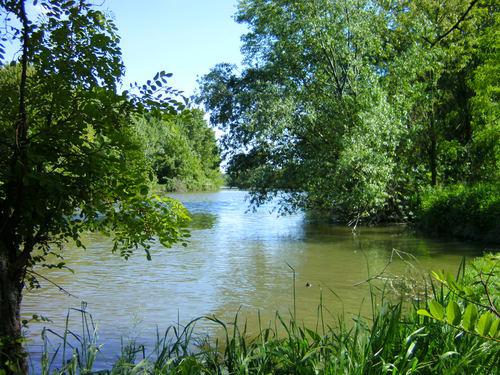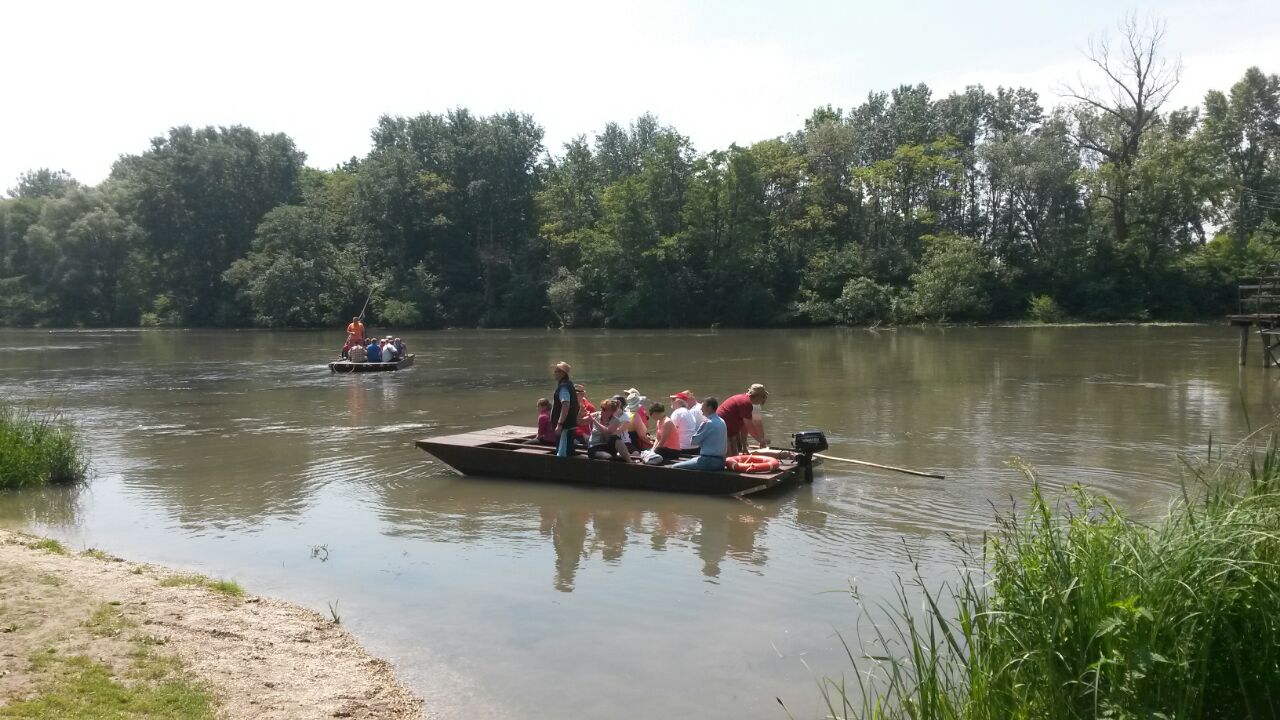The Little Danube – a typical lowland river
The 126.6 km long Little Danube River meanders through the Danube lowlands and its Danube Plain unit. It is the longest and largest left-sided branch of the Danube proper, separating from the main channel in the cadastral part of Bratislava known as Pálenisko. From its outlet near the Slovnaft refinery, it flows through a canal to the village of Most pri Bratislave and then continues following its natural, 30 to 50 m wide channel with a large number of meanders and typical lowland forests in its surroundings.
At Kolárovo, the Little Danube empties out into the Váh, which itself flows back into the Danube near Komárno. The Little Danube watershed covers 3,173 km² with an average flow rate of 31,681 m³/s measured at Trstice (2008). Čierna voda (Black Water) is the largest Little Danube tributary. Other large tributaries are Blatina and Klátovské rameno.

The Little Danube – the Danube’s Inland Delta
Together with the Mosoni-Duna (Moson Danube) in Hungary, the Little Danube forms what is known as the inland delta of the Danube River. This huge alluvial cone extends from the Karlova Ves borough of Bratislava to Komárno and is the result of the river’s activities during the Quaternary period (before any waterworks were constructed) as it cut its way through Devin Gate, a narrow section of the Danube Valley in the Little Carpathian Mountains.
The force of the flowing water subsided and gravel, sand and clay was deposited in this area with significant tectonic settling. These sediments gradually caused the main channel to break off into different distributary channels and meanders over the watershed of the river's main channel. The most monumental and massive branches of Danube are Little Danube and the Moson Danube.

The Little Danube – natural treasures and their protection
The Little Danube forms the northern border of the largest river island in Europe, Žitný ostrov (Rye Island), which is also a very large source of drinking water. The waterway and its surrounding environment form a unique natural area.Water quality in the Little Danube has improved tremendously since the 1970s. Several towns and villages are dotted along the river´s path, including Kolárovo, Vrakuňa, Most pri Bratislave, Malinovo, Zálesie, Tomášov, Jelka, Jahodná and Trstice. Water pollution is largely concentrated in these developed areas and is primarily observed in elevated sulphate, chloride and nitrate levels. High coliform bacteria counts are the most common form of microbiological pollution encountered on the river.
The Little Danube and its uses
The Little Danube is one of the last places in Europe to find preserved water-powered mills, which have been converted into facilities for tourists. The town of Dunajský Klátov maintains a watermill built in 1920 and that was operational until 1942. The mill was built on a distributary channel of the Little Danube and not on the main channel. Another watermill is located in Jelka and is considered a rarity in central Europe. The mill was refurbished in 1993 and a museum was opened at the mill site.

The waters of the Little Danube are used for fishing tournaments and for water sports, primarily canoeing and diving. Boating and rafting on the Little Danube provides an escape from the hustle and bustle of everyday life and a unique experience.